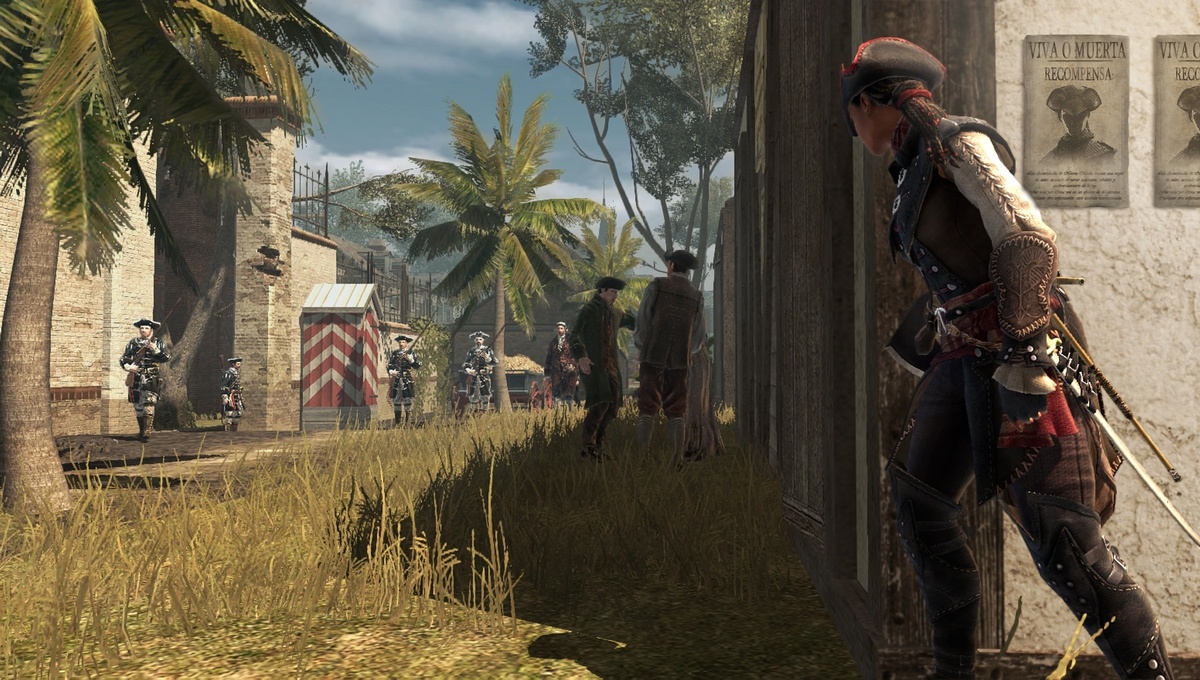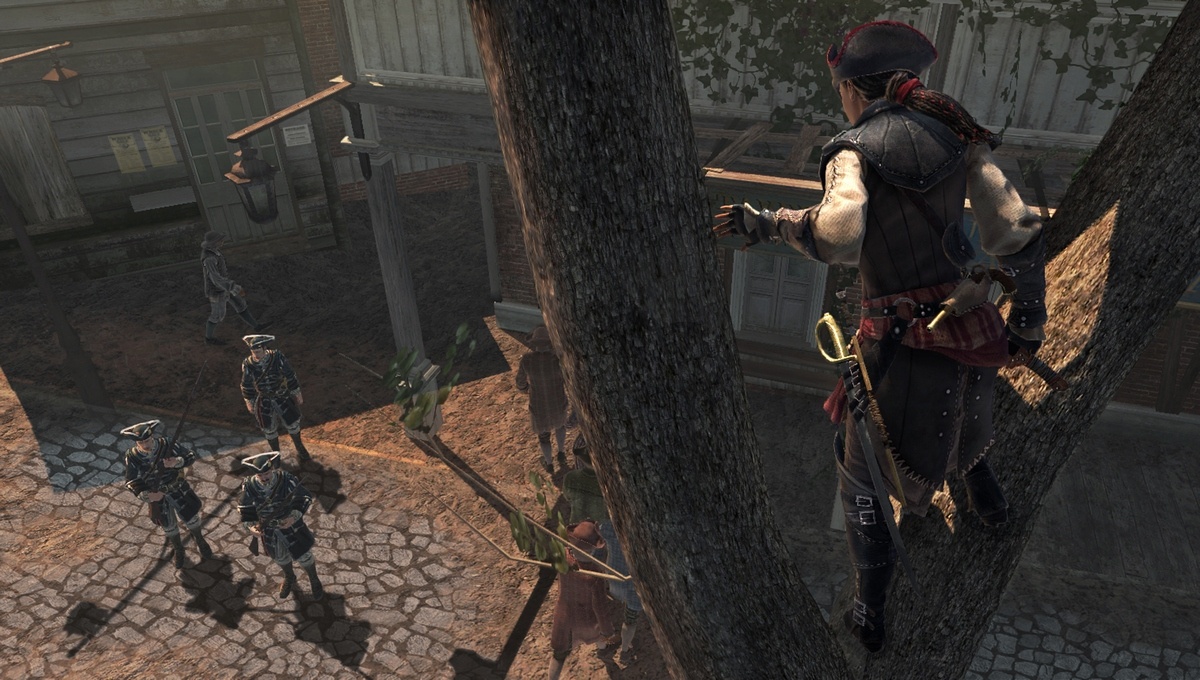Assassin's Creed III: Liberation - At Last, a Lady Assassin
Meet Aveline, the Creole assassin heroine of the Vita's just-announced Assassin's Creed instalment.
An assassin heroine would "feel kind of wrong" against the manly backdrop of the American Revolution. So says the creative director of Assassin's Creed III, for whom the period is "a history of men." Ubisoft Sofia must not have got the memo, because here is Assassin's Creed III: Liberation--a game set at the same time, starring a female protagonist who feels exactly right.
That protagonist is Aveline, whose character materialised out of the studio's preliminary research into old-timey New Orleans, the city in and around which the game is set. "From the beginning, she was there," says producer Martin Capel.
Aveline is the daughter of a French merchant and his African wife, troubling the status quo as both a Templar-stabbing assassin and a female. She does her murderous work in a time and place when, says Capel, certain women were finding new levels of influence and independence, albeit with less cross-dressing than the star of Liberation.
Still, hers is a lovely looking character design, styling out braids and a sweet tricorn hat as her assassin uniform rather than the traditional peaked hood, with a machete (a "sugar cane machete," says the trailer) and blowpipe as signature weapons.
The game takes place over 15 years, with our first glimpse set at the time of the Louisiana Rebellion, in which New Orleans settlers resisted their city being turned over to Spain. So it is that Spanish guards walk the streets and rooftops of Aveline's home city, through which she free-runs in much the same way as her fellow mixed-race assassin, Connor.
The developer intended to squeeze as much of the Assassin's Creed III experience onto the Vita as possible, with tree climbing and wilderness-type areas (such as the swampy bayous) yet to be shown off, says Capel. It's done a fair job, too, though animations are a shade less smooth than those in the console game.
Otherwise, the visuals are impressive. New Orleans especially is handsome, roads lined with palms and the climbable St. Louis Cathedral at its centre. It looks as sunny as signature-city Boston looks chilly in Assassin's Creed III.
We see some of Connor's manoeuvres also making the transition to the Vita; a Spanish guard makes as effective a meat shield against musket fire as a British redcoat. The touch screen on the Vita provides new kinds of control, as well. Charging a power gauge with regular combat kills enables a chain kill, in which you freeze the action, tap each victim in the order you want them dead, then unfreeze it, setting Aveline loose with a quick combo of executions.
The Vita's touch-sensitive display is also used to steer when racing a horse-drawn cart of smouldering gunpowder barrels through the streets of the city, though this looks less convincingly enjoyable than the power trip of a chain kill.
Capel calls the historical setting of his game one of being "outside the Revolution, looking in," another contrast with Liberation's big brother, multi-format, Revolution-set title. His game concerns itself instead with French and Spanish powers vying for the city, smuggling, and, surely, slavery, still thriving in the period of the game. But the games don't exist in isolation of each other: Connor and Aveline will cross paths in some way, says Capel, though elaborating no further than "a crossover is planned."
'Got a news tip or want to contact us directly? Email news@gamespot.com


Join the conversation